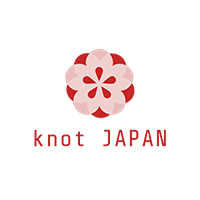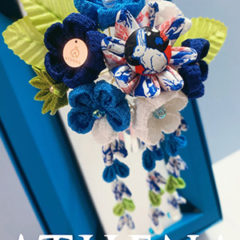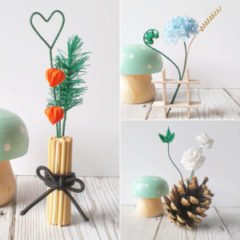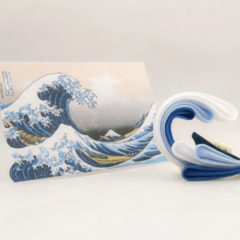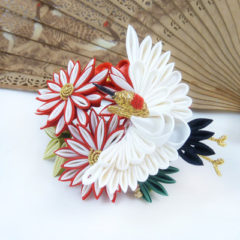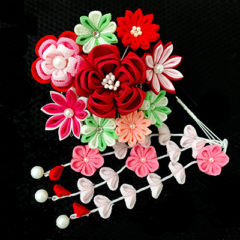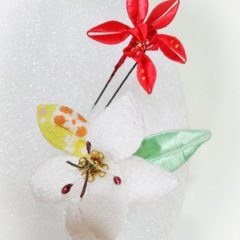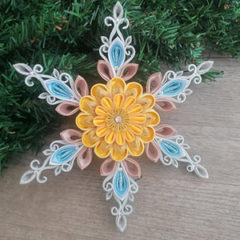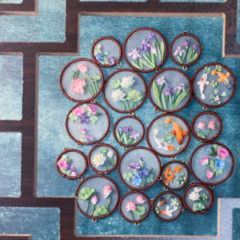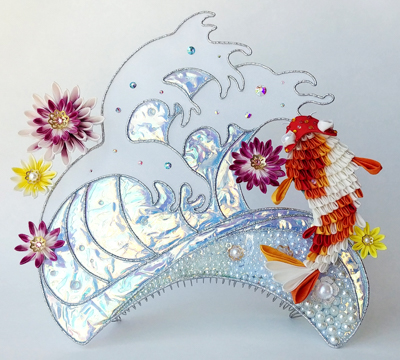
The famous Tsumami-zaiku artists will talk about their thoughts about Tsumami-zaiku.
The fifth Tsumami-zaiku Artist is Canadian artist Angel Weber.
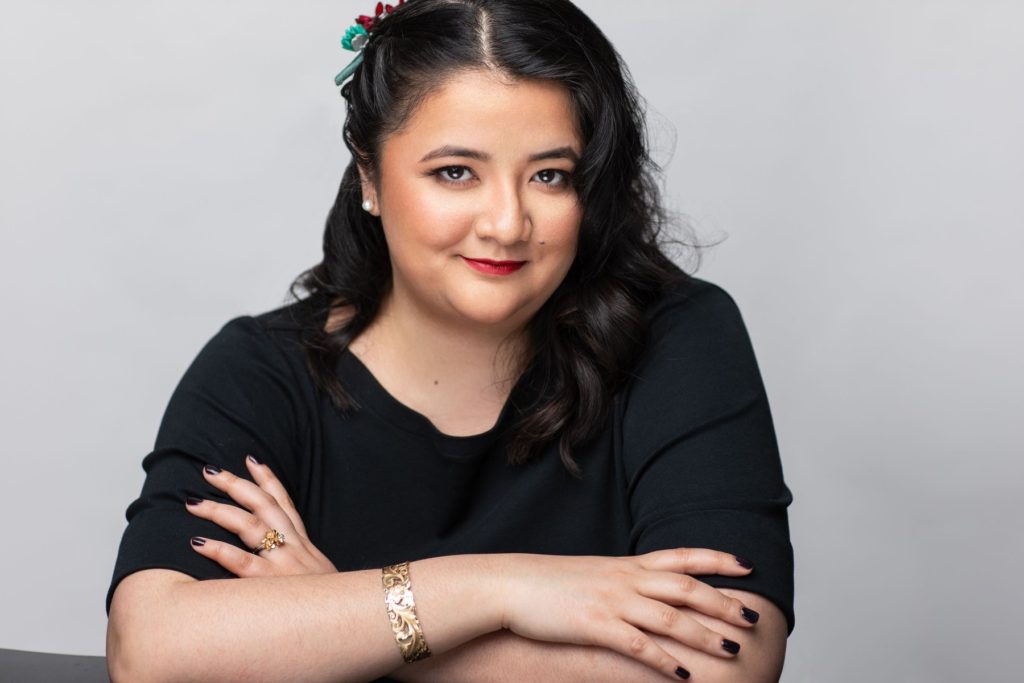
Profile
• 2008 – first encountered tsumami-zaiku while reading about maiko kanzashi
• 2010-2011 – started collecting tsumami kanzashi while living and working in Japan
• 2012 – began studying tsumami-zaiku in earnest
• 2015 – moved from the United States to Canada
• 2016 – started selling tsumami-zaiku both online and at local craft shows
• 2017 – received a grant from Creative Saskatchewan to exhibit tsumami-zaiku at Calgary Expo Holiday market
• Since 2018 – began volunteering with various cultural events and conventions to present historical information, give demonstrations, and share my collection of Japanese tsumami-zaiku
• 2019 – achieved Juried Professional Membership in the Saskatchewan Craft Council as a fiber artist specializing in tsumami-zaiku; received a grant from Creative Saskatchewan to teach a tsumami-zaiku workshop at Anime North in Toronto and exhibit work in Anime North’s Gallery Momiji
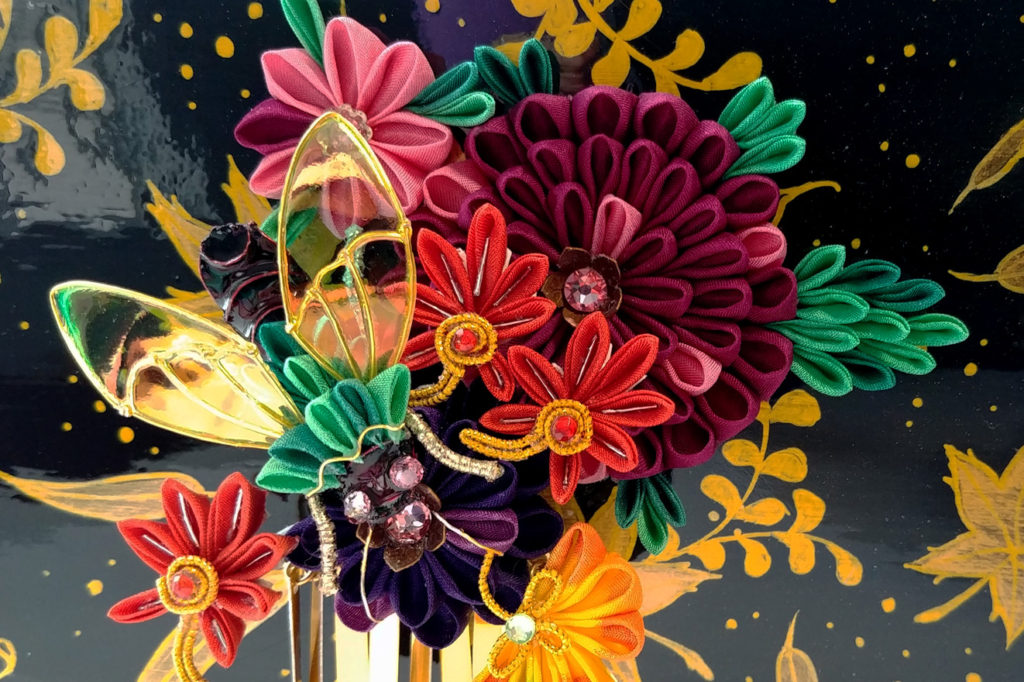
Q1. How did you start working on Tsumami-zaiku? (Or did you get involved?)
I started learning about tsumami-zaiku when I was in University, around 2008, when reading about maiko. I made a few small kanzashi for fun, but only started studying tsumami-zaiku seriously after I worked in Japan for a year as an English conversation teacher.
While living in Japan I traveled to Kyoto several times and started a collection of tsumami kanzashi. I used this collection as inspiration when I returned from Japan and started teaching myself tsumami-zaiku in earnest.
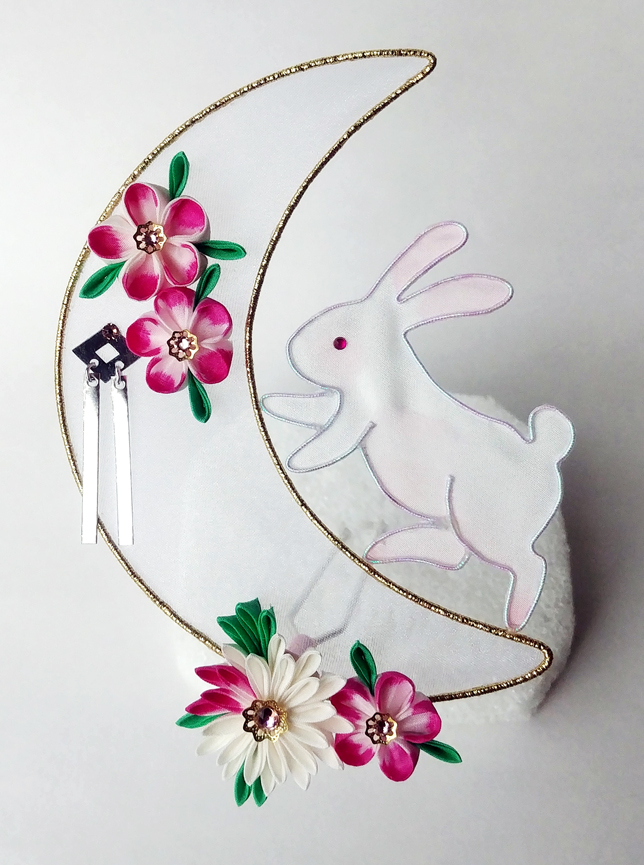
Q2. What are your commitments to your work and what do you care about?
When creating and speaking about tsumami-zaiku the two things I consider most important are creating works that express my point of view as an artist and maintaining cultural awareness of the history and traditions from which tsumami-zaiku is derived.
I have made a wide range of traditional Japanese seasonal motifs similar to those worn by maiko, but I am currently exploring an aesthetic that expresses my own mixed ethnic heritage by combining eastern and western techniques and materials to create tsumami-zaiku pieces that are worn or displayed in unexpected ways.
A few times a year I volunteer with cultural associations, exhibitions, and conventions to give presentations on the history of tsumami kanzashi, where I discuss the seasonal motifs of maiko kanzashi, demonstrate the basics of tsumami-zaiku, and share my collection of Japanese tsumami-zaiku for the benefit and understand of others.
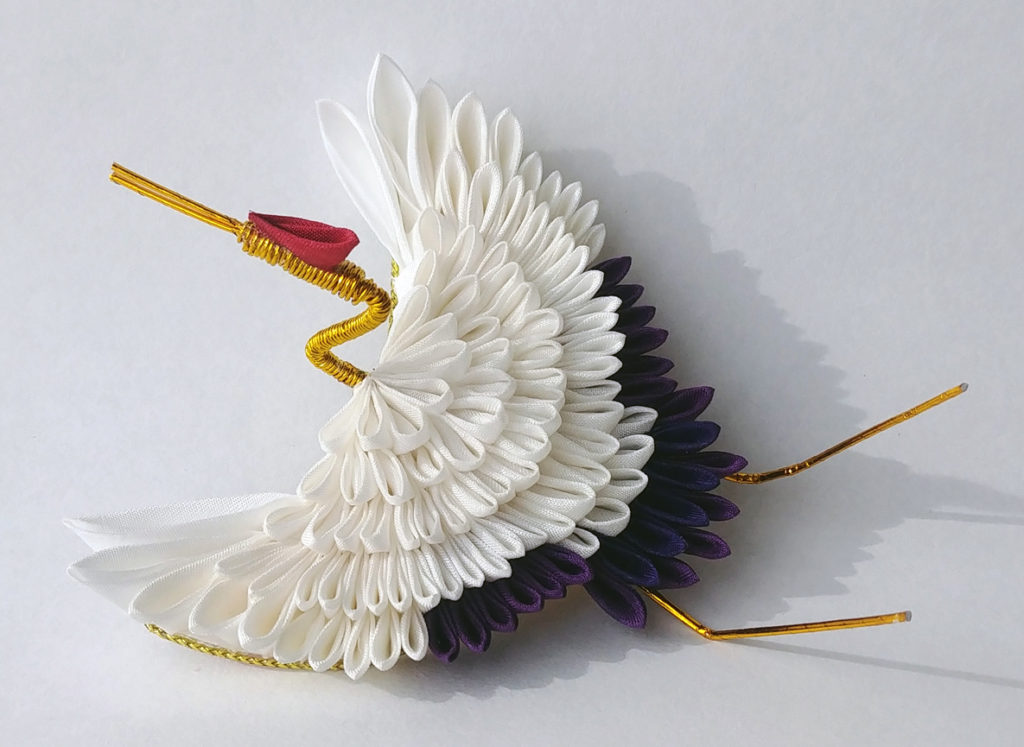
Q3. What is the attractiveness of Tsumami-zaiku for you?
What I love most about tsumami-zaiku is its versatility. Starting with simple squares of fabric you can create vibrant, detailed, and complex works of art.
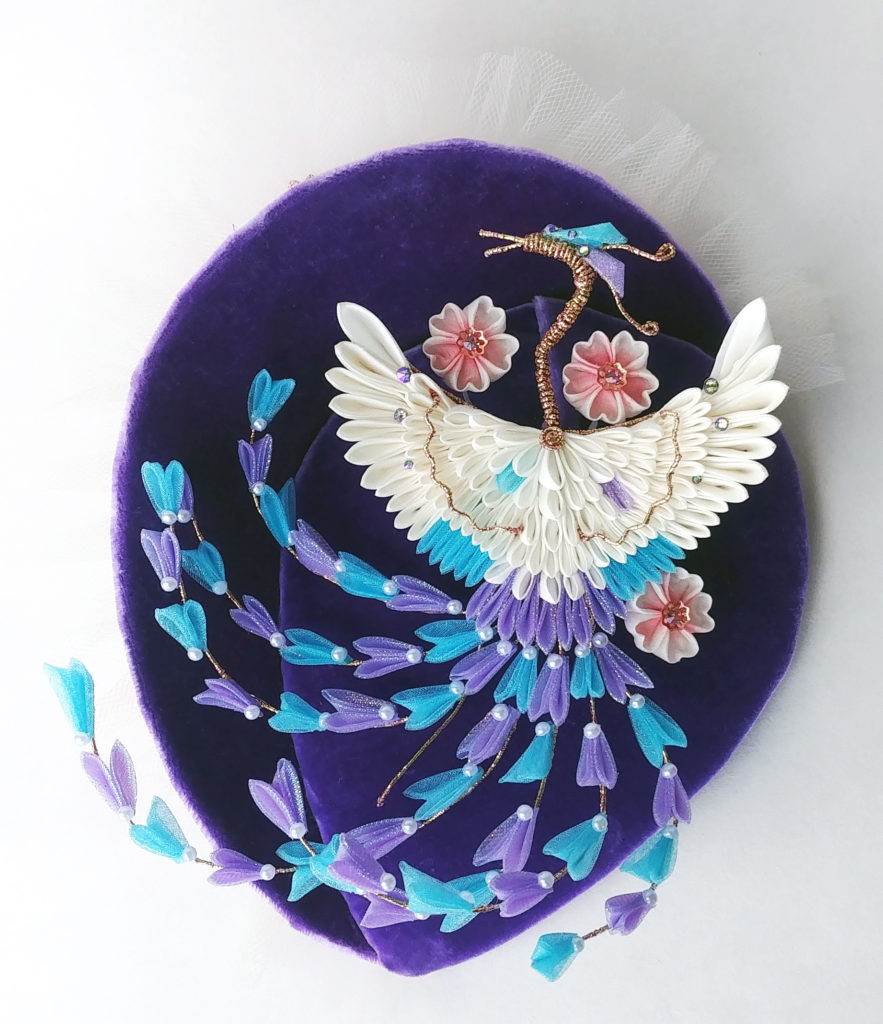
Q4. What do you think about the future possibilities of Tsumami-zaiku?
I would like to see tsumami-zaiku live up to its full potential, for example to create large scale tsumami-zaiku installation art or be featured on haute couture runway shows around the world.
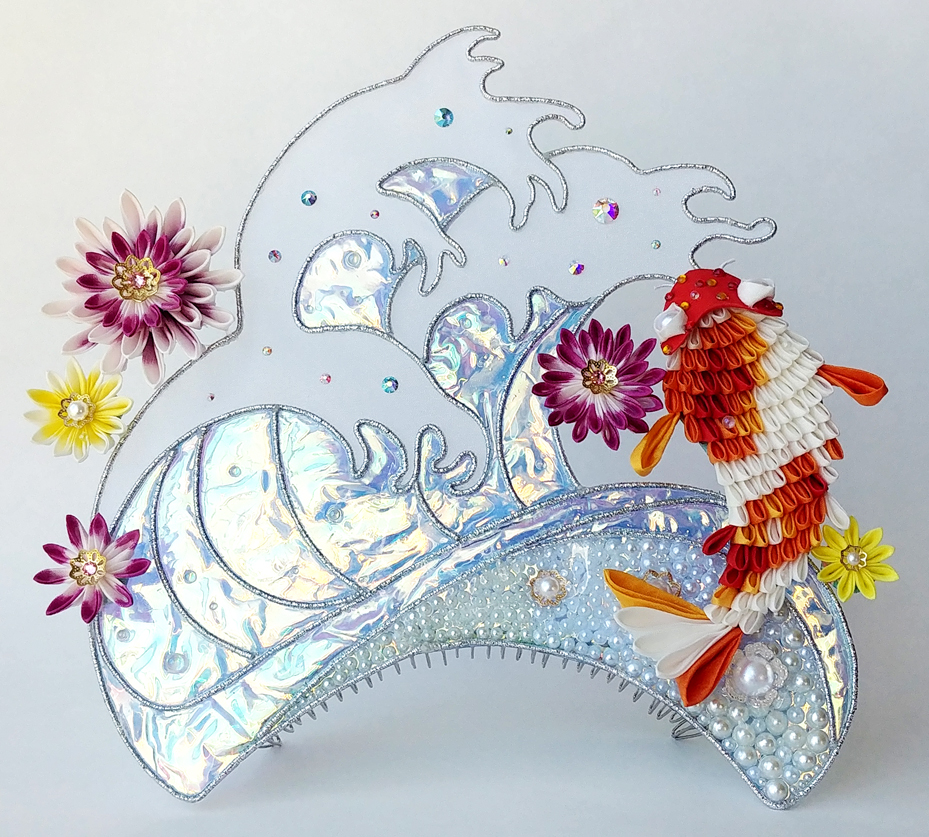
Q5. What do you want to make in the future?
I am currently working on pieces for my first exhibition proposal titled Tsumami Zaiku: Unity. I’m crafting around 40 pieces of tsumami-zaiku composed of hairpins, ear cuffs, tiaras and fascinators, Tsumami-ga paintings with removable hairpins, and large-scale pendant lamps with scenes inspired by kimono design and mid-west Canada, where I live.
I started creating this collection at the beginning of the COVID-19 pandemic, inspired by people coming together to prevent the spread of illness while, at the same time, being separated from each other – and now people around the world have also come together to protest racism and violence.
I want this collection to express not only a unity of eastern and western themes and materials but a unity of hearts and minds through an examination of the changing of seasons and the briefness of life that all people experience – even if we all experience these changes in different ways. This collection is my way of communicating hope in a time of strife.
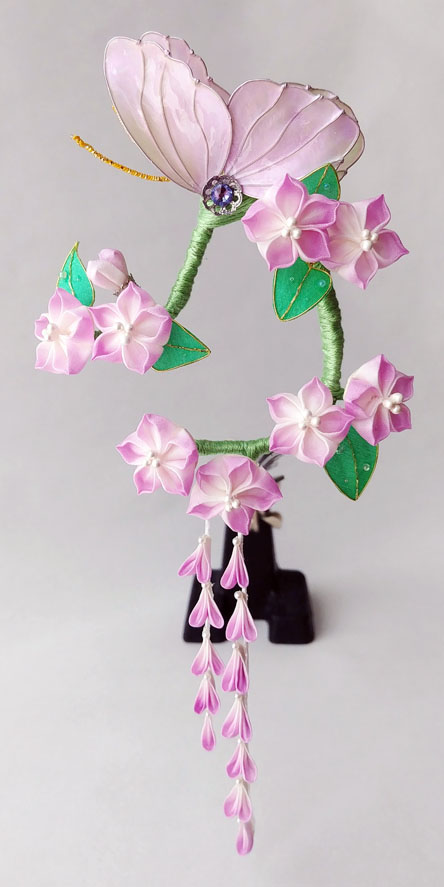
Q6. How do you think you can use/arrange or deploy Tsumami-zaiku in your country?
Tsumami-zaiku is not widely known in Canada, and I would love to attend more events as both an artist and educator to help spread the joy of tsumami-zaiku. But, before expanding the scope of these activities it is my hope to train in Japan and achieve a teacher certification, as I believe this is an important step for anyone who wants to serve with sensitivity in a culturally unique and important art form like tsumami-zaiku.
